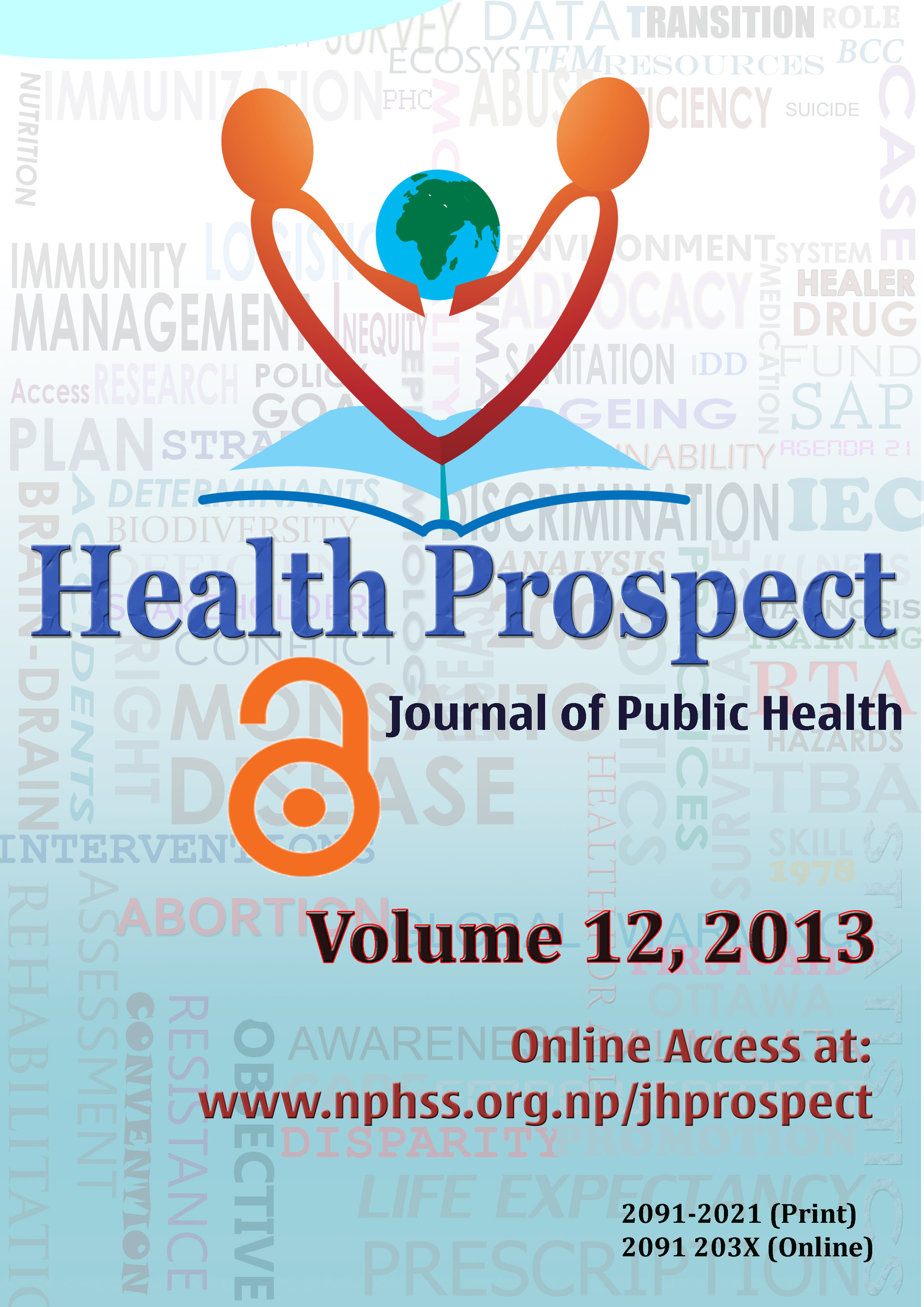Sexual Behaviour among School Youths in a Rural Far-western District of Nepal
DOI:
https://doi.org/10.3126/hprospect.v12i2.9873Keywords:
sexual behaviour, cross-sectional study, school youth, Achham, NepalAbstract
Background Youth population (10-24 years of age) comprises more than 30% of the total population in Nepal. This is the age when values are formed, many become sexually active and begin to develop a pattern of risky sexual behaviour. This makes youth more vulnerable to contacting sexually transmitted diseases including HIV/AIDS. The main objective of this study was to assess the sexual behavior among school youths of a rural far-western district, Achham, Nepal.
Methods A cross sectional study was conducted among school youths aged 15 to 24 years studying at grade 11 and 12 in Achham district. Data were collected from February to April, 2011 using self-administered questionnaires from 229 boys and 156 girls of randomly selected eight higher secondary schools of the district.
Results The study found that over a quarter of the respondents were sexually active before marriage, boys five times more compared to girls. More than one-fourth (28.2%) of sexually active young boys and girls were found to have engaged in multiple sexual relations; of which peers were the most common (71.1%) sexual partners. Overall, three out of every four sexually active school youths were found to have practised risky sexual behavior. The study found age of the respondent, gender, education and age at first sexual intercourse were significantly associated with the sexual behavior of the school youths.
Conclusions Young people at schools were found to be engaged in unsafe sexual activities in study district. They were found initiating multiple sexual relations and pre-marital sexual relations. The use of condom was found declining in subsequent sexual contacts. Such risky sexual behaviours were putting the young population at more vulnerable to the risks of any sexually transmitted infections. Sex education would therefore be imperative to focus on sexual and reproductive health interventions targeted for the young people.
DOI: http://dx.doi.org/10.3126/hprospect.v12i2.9873
Health Prospect Vol.12(2) 2013: 37-41




